Out of Left Field
Top 10 Most Obscure Video Game Spinoffs of All Time!
We’ve already taken a look at gaming’s greatest spinoffs and we’ve also explored the idea of forgotten sequels, and this countdown falls somewhere in between. The games on this list are obscure spinoffs that you (probably) have forgotten about. That is, of course, assuming you ever knew they existed in the first place! Most of the entries on this list were given limited releases and none of them set the sales charts on fire, so it’s understandable if you’ve never heard of them. Not every spinoff is going to catch on like Mario Kart or World of Warcraft, but that’s the risk that publishers take when they venture out of their comfort zones.
10
Uncharted: Fight for Fortune
Uncharted Series
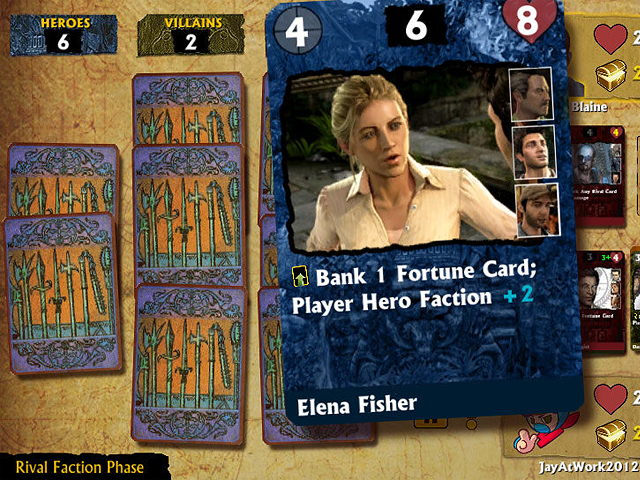
There have been quite a few notable digital card games based on existing franchises, and a handful of them were even explored in our list of best mini-games. The Uncharted series is all about thrilling adventures, exciting set pieces, and rollercoaster-style gameplay, so it’s not the most likely candidate for a card game. Nevertheless, Sony decided to test the waters with Uncharted: Fight for Fortune. The object of the game is for players to drain their opponents health by using various cards representing characters, scenarios, and objects from the mainline Uncharted games. The cards have different statistics and purposes, and they can be buffed with additional treasure cards. It’s standard fare for the most part, but it didn’t exactly have a lot of depth. There were a couple of downloadable content packs, but they didn’t make the game feel any more rewarding. Uncharted: Fight for Fortune has been largely forgotten for several reasons. Firstly, it received middling reviews and wasn’t held in the same regard as most Uncharted games. Moreover, it was released exclusively on the Vita so it never had an especially bright spotlight in the first place. The game’s online multiplayer (including the asynchronous multiplayer mode) closed in 2019, so there’s little chance that the game will be re-discovered in the future.
9
Learn with Pokémon: Typing Adventure
Pokémon Series
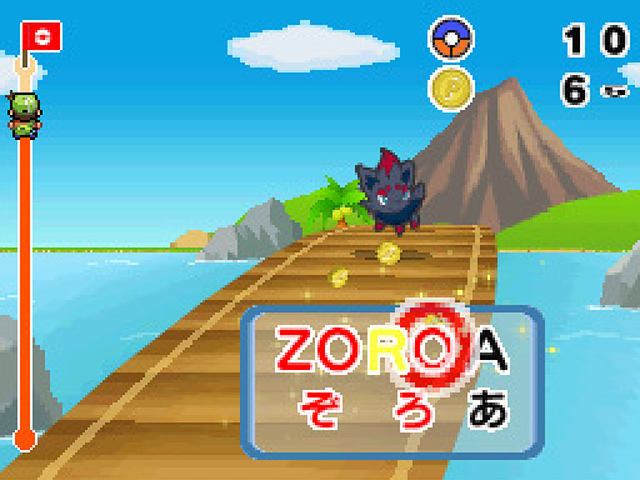
We have seen dozens upon dozens of Pokémon spinoffs over the years, and many of them are unusual. It’s difficult for any of them to be considered obscure, given the popularity of the franchise, but Learn with Pokémon: Typing Adventure completely skipped the North America market despite being released in English. The “edutainment” genre is often overlooked, but there have been a handful of notable typing video games that are worth discussing. In 1992, for instance, Interplay published Mario Teaches Typing on personal computers. Although this game could be considered an oddity, it was anything but obscure. The Macintosh version of the game sold a half million copies on its own! Sega’s Typing of the Dead was a little more out there, but the gaming community at large embraced the quirky title from the beginning. In fact, it was even recognized on this very site as one of the greatest spinoffs of all time! Learn with Pokémon: Typing Adventure, on the other hand, is a game that I completely forgot about. The point of the game is to catch various Pokémon by accurately typing their names. This doesn’t sound overly complicated until you realize that the game was released for the Nintendo DS. It’s obviously not a natural fit, so the game came bundled with a Bluetooth keyboard that was never used for any other title. I’m not sure why anyone would want to learn how to type on a tiny DS screen, especially when you consider that most homes had access to proper PCs by 2012, but I digress. I guess having a Pokémon Professor as an instructor beats sitting through another one of Mavis Beacon’s lessons.
8
DOOM RPG
DOOM Series
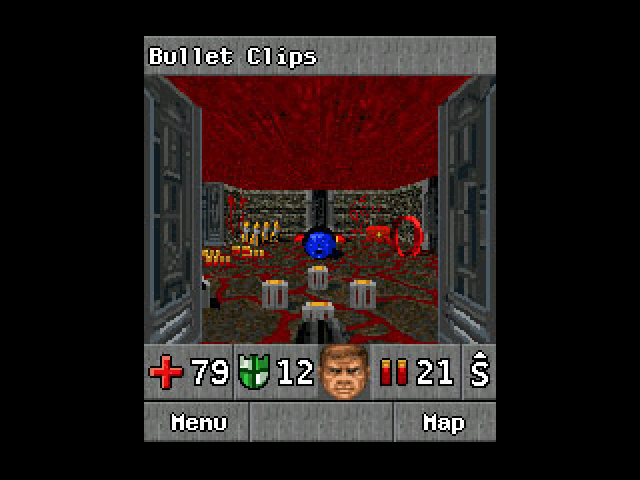
DOOM is widely regarded as one of the most influential games of all-time. Similar games were typically referred to as “DOOM clones” before “first-person shooter” became common parlance. The series has remained relevant for the better part of three decades, and most mainline entries have been met with critical acclaim. It seems odd that a DOOM game could fly under the radar, but DOOM RPG obviously did things differently than its predecessors. The game featured a first-person viewpoint like the original DOOM and looked like a typical DOS game from 1993. The action components were obviously scaled back, however, but that’s exactly what you’d expect from a turn-based RPG. The game plays like a typical dungeon crawler, and it could be likened to the first-person dungeons from Phantasy Star. DOOM RPG featured the same protagonist as previous DOOM titles and put a greater emphasis on the plot, but it didn’t make much of a splash despite being directed by John Carmack himself. The biggest thing the game had going against it was the fact that it was released on mobile phones… in 2005. Mobile gaming has expanded exponentially since the release of the iPhone, but the landscape looked very different when DOOM RPG was released. An entire era of mobile games were rendered obsolete by smart phones, and DOOM RPG is just one of many examples. If it wasn’t for the release of DOOM II RPG in 2009, I’d probably forget that it’s predecessor ever existed.
7
Freshly-Picked Tingle’s Rosy Rupeeland
Zelda Series
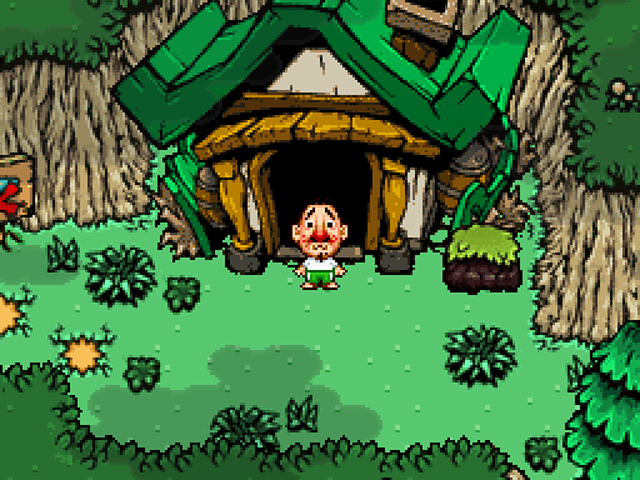
Tingle is an eccentric man-child who claims to be a reincarnation of a fairy. He’s easily identified by his green bodysuit and his unusual mannerisms, and many fans have openly questioned his sexuality. Tingle first appeared as a map salesman in Majora’s Mask, and he became one of those rare characters to be featured in multiple Zelda games irrespective of where they fell in the franchise’s convoluted timeline. The folks at Nintendo even decided that Tingle deserved numerous spinoff games. Freshly-Picked Tingle’s Rosy Rupeeland is an imaginative action-adventure game that challenges players to gather as much money as they can. This is more complex than it sounds, since you have to spend vast amounts of money to progress through the adventure. You’ll hire bodyguards to help you fight, you’ll lose money when attacked by enemies, and many of the NPCs won’t give you the time of day unless you pay them first. You’ll also have to master the art of bargaining, and you could easily wind up spending more money than necessary for food and information. It’s a truly unique experience with some exciting boss battles, but the game was never given an American release. Incidentally, Nintendo of America held an online poll asking fans if they wanted the game to be imported or not. The results were overwhelming, and it was clear that American fans wanted nothing to do with the wannabe fairy. It’s common knowledge that Tingle is a disappointment to his father, and these sentiments were echoed by American Zelda fans.
6
Arm Wrestling
Punch-Out!! Series
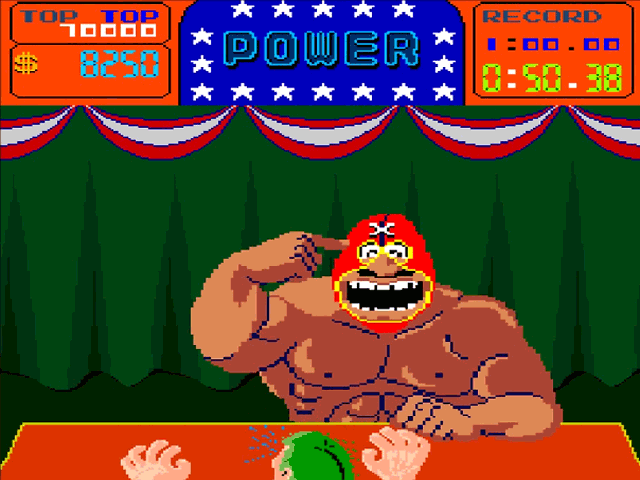
Punch-Out!! was arguably the best Nintendo game released prior to Super Mario Bros. The ambitious 1983 arcade game featured a roster of memorable fighters that were remarkably expressive. Although the colorful characters were designed in-house by Shigeru Miyamoto, the animations were handled by a professional anime studio. This resulted in the most charismatic video game characters of the era. Super Punch-Out!! hit arcades less than a year later, and featured a new batch of remarkable boxers. The original arcade games became a distant memory after Mike Tyson’s Punch-Out!! hit the NES, but they were eventually given a home release on the Switch in 2018. There’s one game in the Punch-Out!! universe that remains lost in the annals of time, however. In 1985, Arm Wrestling was released in North American arcades. The game was developed by the Punch-Out!! team and the arcade cabinet used the same dual-monitor setup. The characters were just as stereotypical as the Punch-Out!! boxers, and the roster included everything from a sumo wrestler to a robotic gorilla. The mysterious Mask X was an especially intriguing character. He looked like a muscled-up wrestler, but the truth was revealed after he was unmasked. As it turns out, Mask X was actually Bald Bull from Punch-Out!! the entire time! Arm Wrestling was a spinoff that wasn’t marketed as a spinoff, it was released exclusively in North America, and it has never been given a home release of any sort. That sounds pretty obscure to me!
5
Wily & Right’s RockBoard: That’s Paradise
Mega Man Series
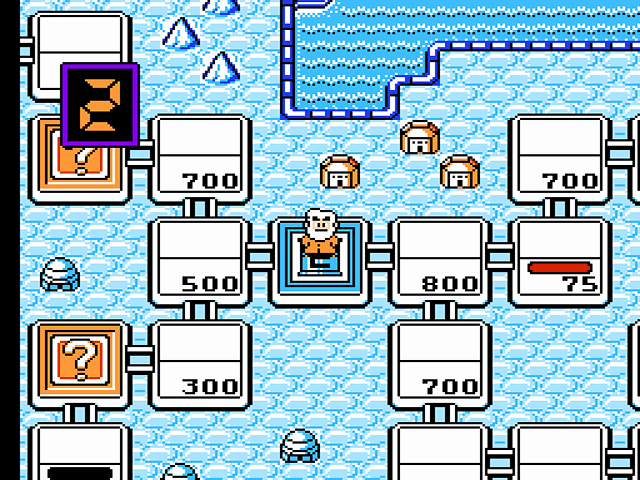
At this point, there are more Mega Man spinoffs than mainline entries. In fact, most of the spinoffs could be considered standalone franchises at this point. We have Mega Man X, Mega Man Legends, Mega Man Battle Network, Mega Man Star Force, and probably a few others that I’m forgetting. Even the spinoffs have spinoffs, which is how we arrived at The Misadventures of Tron Bonne. The first absurd Mega Man spinoff that caught my attention was Mega Man Soccer in 1994, but I feel compelled to mention Wily & Right no RockBoard: That’s Paradise instead since it came out first. Also, this countdown is based around obscure spinoffs, so it makes sense to recognize one that was never released outside of Japan. Although the game could be classified as a business simulation, it would be easier to describe Wily & Right no RockBoard as a modified version of Monopoly featuring Rockman/Mega Man characters. The premise involves players (and the computer AI) taking turns to advance on the board, buying up property, and charging other players rent when they land on those spaces. The winning conditions can change depending on the chosen rule set, and the game moves along at a much quicker pace than most Monopoly outings. If nothing else, the game was notable for giving you the chance to play as iconic characters like Dr. Wily and Roll. Video games that are presented like board games are not especially uncommon, but they were a rarity when Wily & Right no RockBoard hit the market in 1993.
4
Sonic Eraser
Sonic the Hedgehog Series
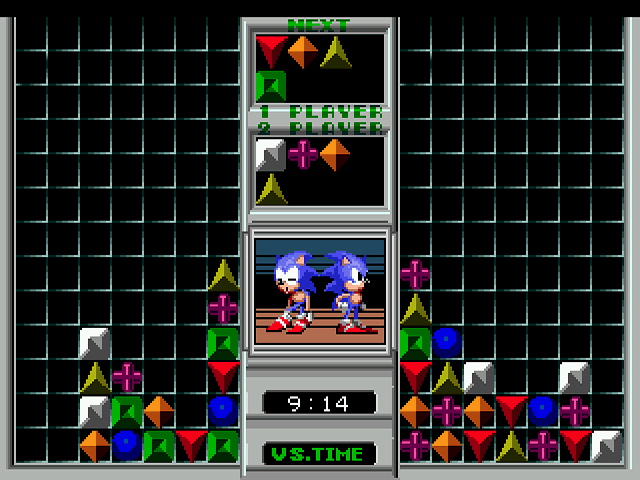
Dr. Robotnik’s Mean Bean Machine was a reskinned version of Puyo Puyo that featured characters from the Sonic the Hedgehog series. The game was well-received and helped introduce the west to the Puyo Puyo franchise, but most people are unaware that Sega had released another “falling block” puzzle game featuring Sonic characters two years earlier. The goal in Sonic Eraser is to arrange various groups of shapes in order to line them up and eventually erase them from the playing field. It’s a simple concept that fans probably would have gravitated to, but most gamers were unaware of its existence since it was initially released exclusively for the Sega Meganet service in Japan. This was a paid service offered through dial-up Internet, and it required players to have a peripheral called the Mega Modem in order to access it. Sega Meganet was made available in Japan in 1990 and later launched in Brazil in 1995. Since the service was not available in any other country, there was no legitimate way for most Sega fans to play any of its exclusive titles. The game was virtually unknown on the worldwide stage, but it was thankfully rescued by some spirited Sonic fans who managed to download it from the Meganet servers and convert the encrypted information into a usable file. The game was later released on Sega of Japan’s website in 2004, but it remains an oddity to this very day.
3
E.X. Tr∞pers
Lost Planet Series
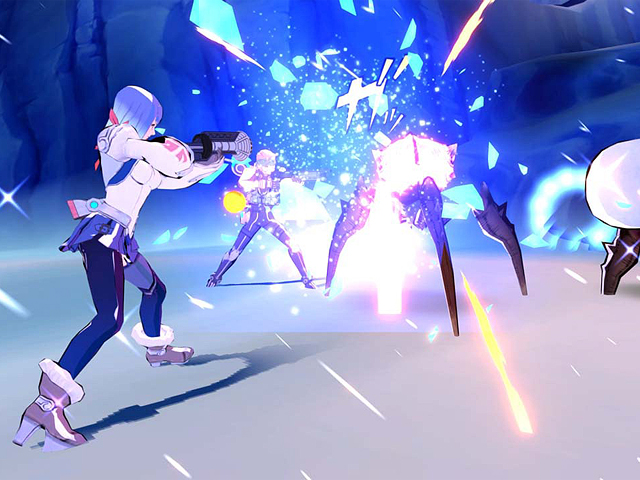
In 2012, Capcom released E.X. Tr∞pers for the PlayStation 3 and Nintendo 3DS. The third-person shooter was built around the premise of “exhilarating manga-esque action,” and it allowed players to run, dash, grapple, and zip-line through different areas. You could also use a jet pack to quickly boost over short distances. Although players could contend with their enemies with an arsenal of weapons, they could also use melee attacks to keep them at bay. You could potentially launch an opponent into the air with a punch and then juggle them with firearms before kicking them away. The aforementioned jet pack could also be incorporated into your attack plan. E.X. Tr∞pers was largely defined by giant robots and anime waifus, so it might surprise you to learn that it was actually a spinoff of Lost Planet. The cel-shaded graphics and manga-inspired cutscenes gave the game its own identity, and you probably wouldn’t have guessed that it was part of the Lost Planet universe. Capcom even enlisted the help of Dai Sato (who had worked on iconic anime like Cowboy Bebop and Ghost in the Shell: Stand Alone Complex) to write the script. Unfortunately, E.X. Tr∞pers was a commercial failure despite its slick production values, and it was never localized outside of Japan.
2
Radical Dreamers: Nusumenai Hōseki
Chrono Series
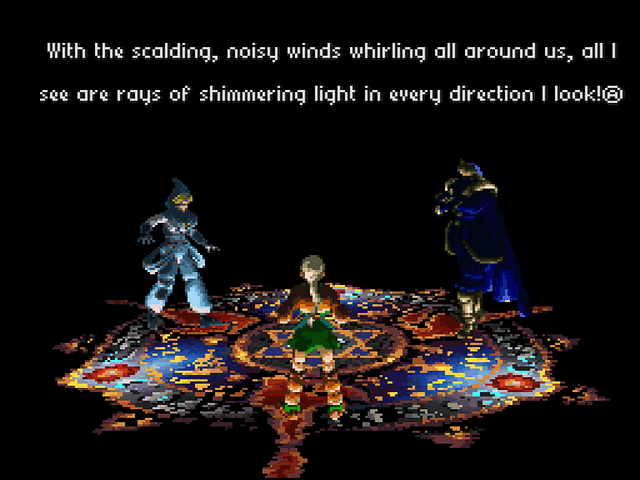
Chrono Trigger was listed on this site as the greatest SNES game of all-time and Chrono Cross was ranked highly on our PlayStation list, but few are aware that there was another game in the series that was released exclusively for Nintendo’s Satellaview system. Radical Dreamers: Nusumenai Hōseki is a text-based adventure game that functions as a side story to Chrono Trigger. The plot centers around a gang of reputable thieves comprised of a carefree adventurer named Serge, a masked mage name Gil, and their boisterous leader named Kid. As the eponymous Radical Dreamers, the gang sets out to steal an artifact called the Frozen Flame from an aristocrat called Lord Lynx. Fans of the Chrono games are likely familiar with those names, but most are unaware that versions of those characters had been introduced four years prior to the release of Chrono Cross. Radical Dreamers was destined to live in obscurity from the beginning, due to the volatile nature of the Satellaview. There were no physical copies of the game, after all, which meant that there was no official way to play the game after the service was inevitably discontinued. Furthermore, it was never slated for release outside of Japan, the game was completed in a matter of months, and the director considers the game to be unfinished. Radical Dreamers was obviously never going to get as much attention as the other Chrono games, but many of its plot elements were recycled for use in Chrono Cross. The music was pretty spectacular too, and roughly half of it wound up being reused as well. If it wasn’t for the emulation scene, the game would have been lost forever.
1
Arthur to Astaroth no Nazo Makaimura – Incredible Toons
Ghouls ‘n Ghosts Series
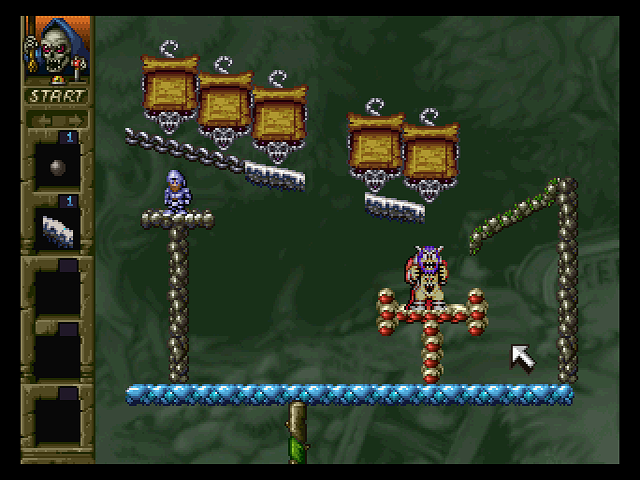
Ghosts ‘n Goblins was a notoriously difficult platformer that followed a brave knight named Arthur on his quest to save a beautiful princess. He had to contend with hordes of undead foes during his adventure, and the game is remembered fondly for its fantastical setting and catchy soundtrack. The sequels were more refined in many regards, but they followed the same formula that was used in the original. The series was popular enough to warrant a spinoff series in the way of Gargoyle’s Quest, while Maximo: Ghosts to Glory could be considered a spiritual successor for the PlayStation 2 generation. Arthur himself made cameos in a number of crossover games, but his most obscure appearance was in an overlooked puzzle game from 1996. Several years earlier, Dynamix and Sierra On-Line released an innovative PC game called The Incredible Machine that tasked players with creating elaborate Rube Goldberg devices from a given set of objects. Sid & Al’s Incredible Toons employed a similar concept the following year, but it added a comical flair since it was set within a cartoon instead of a laboratory. Capcom licensed Incredible Toons from Dynamix and intended to localize it for Japanese audiences. Late into development, they decided to add characters and items from Ghost ‘n Goblins rather than using the generic cartoon-based objects from the original game. The objectives in Arthur to Astaroth no Nazomakaimura: Incredible Toons varied drastically from one stage to the next, and you’d often have to set up ramps, conveyor belts, catapults, and pulley systems in order to solve the puzzles. There were also a ton of outlandish objects thrown in for good measure, including extendable boxing gloves and various undead creatures. The game felt like a proper sequel to Sid & Al’s Incredible Toons, but the Ghosts ‘n Goblins facelift made it a unique experience. Most people have no idea the game exists since it was never released outside of Japan, but I’d recommend checking it out. Even if you’re not interested in puzzle games, you should be able to appreciate the amazing soundtrack.

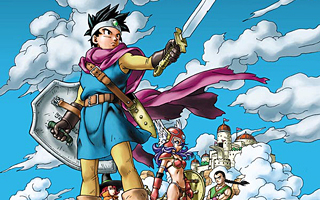
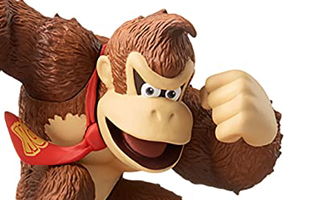
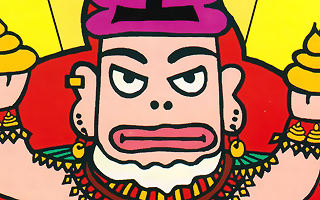
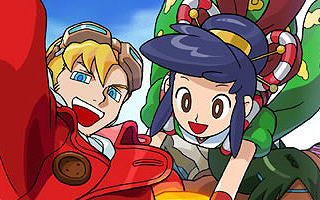
Do you agree with this list? Let us know what you think by leaving a comment below. Your opinion matters!